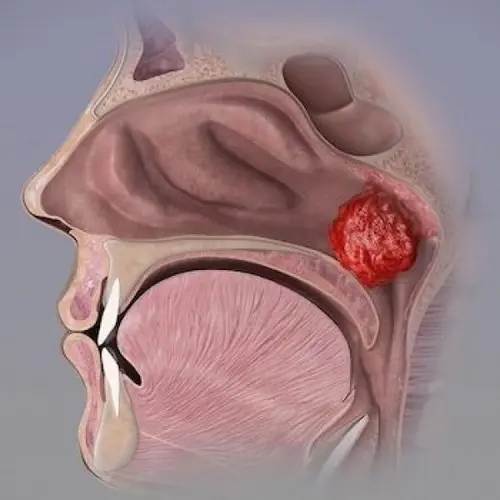Diagnosis of adenoids

Author: Dr. İsmayıl İ. Category: Nose
Published: 2022 - 16 - Nov
1 - Based on the results of a survey of parents and a child (complaints of snoring at night, mouth breathing, etc.), an objective examination (anterior rhinoscopy, posterior rhinoscopy), a doctor can, with varying degrees of accuracy, diagnose adenoids.
2 - Objective examination consists of pharyngoscopy, anterior rhinoscopy, posterior rhinoscopy.
- Pharyngoscopy - examination of the throat, assessment of the condition of the posterior wall of the oropharynx, the presence of mucopurulent discharge along the posterior wall, palatine tonsils, and the oral cavity. Sometimes, when lifting the soft palate with a spatula, it is possible to see adenoids (at high magnifications).
- Anterior rhinoscopy - during this examination of the nasal passages with the help of a nasal mirror, the doctor assesses the condition of the nasal passages, the presence of edema, separated in the nasal cavity. After anemia of the nasal mucosa or instillation of vasoconstrictor drops, it is often possible to see adenoid vegetations covering the choanae.
- Posterior rhinoscopy - examination of the nasopharynx using a special mirror through the oropharynx. In the mirror, the doctor sees either a hemispherical formation with grooves, folds, or a group of separate from each other and hanging from above nipple-shaped formations coming from different parts of the nasopharynx. This is a fairly informative and harmless method, but it has a serious drawback - it is very difficult to conduct this study in children, for most of them it is simply not possible to conduct an examination.
3 - A more or less definite picture is given by a digital examination of the nasopharynx. The doctor tactilely feels the presence of adenoid vegetations in the nasopharynx, their approximate size. However, given the pronounced negative attitude of children to this procedure, the approximate nature of the interpretation of the results of this survey, I would not recommend such a study.
4 - Endoscopic examination is perhaps the most informative method for diagnosing adenoids (along with X-ray) using rhinoscopes, which are rigid and flexible (fibroscopes). The specialist visually sees the adenoid vegetations themselves, the degree of their growth, the presence or absence of their inflammation, the state of the mouth of the auditory tubes and some other nuances. The advantages of endoscopic examination of the nasopharynx are informative, harmless, the possibility of documenting the results of the study (photo and video filming). The disadvantage is the complexity of the procedure in children in most cases (meaning under local anesthesia).
5 - The most commonly used method for diagnosing this is x-ray of the nasopharynx. With the help of x-ray examination, the degree of adenoids is determined, their relationship with surrounding tissues and organs (for example, with the spine, which is very important for adenotomy)